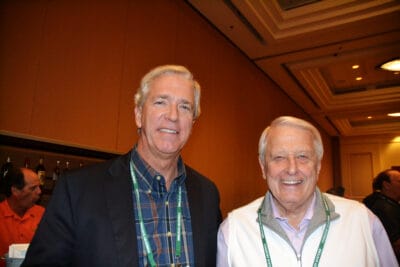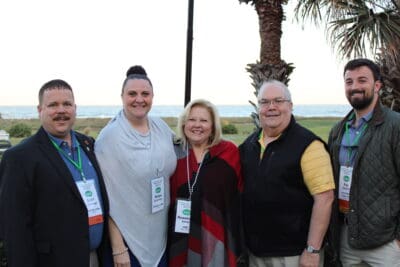
The Biden Administration and Congressional Democrats, who cling to razor thin majorities in the House and Senate, continue to try to stitch together a workable compromise on a package of infrastructure spending and social program investments. This process began in earnest back in August, when the Senate approved a $1 trillion bipartisan infrastructure bill and followed that up with passage of a budget resolution, which provided instructructions to a number of committees to fashion a $3.5 trillion social spending bill. The latter is being pursued through a parliamentary process known as reconciliation, which requires only a simple majority in the Senate instead of the normal 60 vote threshold, but includes fairly strict limitations that prevent the process from being used on just any legislation. The process was deployed earlier this year to enact the $1.9 trillion pandemic relief measure, as well as the Tax Cuts and Jobs Act in 2017 and the Affordable Care Act during President Obama’s first term.
While legislative leaders had hoped for swift enactment of these two measures, progress has encountered headwinds. In the Senate, all 50 Democrat Senators must be on board for the reconciliation process to prevail, as Republicans are unified in their opposition to the reconciliation package. Two moderates, Senators Kristen Sinema (D-AZ) and Joe Manchin (D-WV), have consistently voiced concern and opposition to spending levels that have been on the table. Likewise in the House, Speaker Pelosi has had to balance the interests of the progressive members in her caucus with moderates in the Blue Dog and New Democrat Coalitions.
Our expectation is that a trimmed-down package will ultimately be enacted, but later this year, likely around the holidays. The Hardwood Federation team, like most other organizations in town, has been playing both offense and defense in this exercise. On the offense side, there are several provisions in the infrastructure bill that are positive. In the forestry space, the legislation includes measures aimed at reducing the risk of wildfire through forest management. One of the ongoing challenges to making thinning projects economical is access to processing facilities. In many areas in the West, for example, existing wood processing infrastructure is not in close proximity to federal forests that desperately need active management. To address this, the legislation creates a new federal system for subsidizing sawmills and other wood processing facilities, along with $400 million in new financial assistance. The provision specifies that “close proximity” to a sawmill would become a factor for agencies to consider when funding federal land restoration.
In addition to $110 billion to address the needs of our nation’s aging roads and bridges, the bill authorizes two programs to increase the trucking workforce and help shippers who rely on trucks to move products to market. One is a pilot program that would allow younger drivers between the ages of 18 and 21 to drive trucks interstate. Currently, these younger drivers may only operate within a state’s borders. The other is a provision promoting women in the trucking workforce. Language in the bill directs the Federal Motor Carrier Safety Administration (FMCSA) to establish a “Women of Trucking Advisory Board.” The board is tasked with identifying barriers to entry for women in the trucking industry, work across organizations and companies to coordinate formal education and training programs, and help identify and establish training and mentorship programs for women in the industry. Although women make up nearly half of our country’s workforce, they represent less than 10 percent of truck drivers across the country. At a time when trucking companies are struggling to find and retain workers, removing barriers to entry for women is a common sense, practical approach to try to address the driver shortage. And finally for North Carolina, a prime Hardwood state, there is a provision grandfathering the current state weight limits on state roads that are slated to become federal interstates. Without enactment of the grandfather clause, weight limits would drop down to 80,000 pounds from the current 90,000 pound limit.
Outside the trucking space, there is language designed to help small and medium sized manufacturers make their operations more efficient. Specifically, $2.1 billion is authorized to help manufacturers improve energy, water and material efficiency, load management and onsite generation to reduce waste and pollution while increasing profit.
On the defensive front, spending of the magnitude under discussion necessitates finding so-called “pay fors” to offset the cost to the federal treasury. An increase in the corporate tax rate has been on the table for many months. The bidding started at raising the corporate rate to 28 percent from 21, but most believe that the ultimate number will be closer to 25 percent. The Hardwood team has been particularly focused on efforts to roll back the 20 percent deduction that was enacted for S-Corporations and other pass-through entities as part of the Tax Cuts and Jobs Act. Senator Ron Wyden (D-OR), the lead tax writer in the Senate, has authored legislation to eliminate this deduction for business owners making more than $400,000. Wyden contends that this deduction, known as Section 199A, is used only by multi millionaires and large businesses. As we know, pass-throughs are a common feature in the Hardwood sector and this tax structure is popular across the economy. In fact, pass-throughs comprise 95 percent of all businesses in this country and employ the majority of private-sector workers. What Senator Wyden’s legislation does not acknowledge is that Section 199A limits the deduction for larger pass-through businesses to those that have significant employment and investment levels. If a large pass-through business does not create jobs and invest in its community, it does not receive the deduction. The Hardwood Federation joined several other trade groups in signing onto a letter earlier this year opposing Senator Wyden’s legislation and its inclusion in any reconciliation measure.
We are also keeping close tabs on discussions around eliminating the “stepped up in basis” for calculating capital gains on property or assets that are passed on after death. Currently, the cost basis upon which capital gains are calculated receives a “step-up” to its fair market value, or the price at which the property or assets would be sold or purchased in a fair market. Stepping up the cost basis eliminates the capital gain that occurred between the original purchase of the asset and the heir’s acquisition. Eliminating this cost basis adjustment would have a profound effect on both businesses and individuals. Senator Chris VanHollen (D-MD) has introduced legislation titled the Sensible Taxation and Equity Promotion (STEP) Act would eliminate stepped up in basis for all capital gains over $1 million. This proposal has attracted wide spread opposition from sectors across the economy. Perhaps most vocal is the agricultural community where many farms are family owned, purchased many years ago and passed on through generations. We are not expecting the stepped up provisions to make it into any final package, but again we are staying close to the situation.
The situation continues to be fluid and, again, resolution not expected until later this year. The above reflects the status of legislative action in late summer…the deadline for submitting this article. The Hardwood Federation team will continue to be your voice in Washington throughout this process and will keep you regularly apprised of developments and progress on our priorities.









